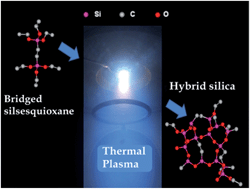Plasma-deposited hybrid silica membranes with a controlled retention of organic bridges
Abstract
Hybrid organically bridged

* Corresponding authors
a
Department of Applied Physics, Eindhoven University of Technology, 5600 MB Eindhoven, The Netherland
E-mail:
p.h.tchoua.ngamou@tue.nl, m.creatore@tue.nl
Tel: +31 40-247 4223
b ECN, Energy research Centre of the Netherlands, P.O.Box 1, 1755 ZG Petten, The Netherlands
c SolSep BV, Apeldoorn, The Netherlands
Hybrid organically bridged

 Please wait while we load your content...
Something went wrong. Try again?
Please wait while we load your content...
Something went wrong. Try again?
P. H. T. Ngamou, J. P. Overbeek, R. Kreiter, H. M. van Veen, J. F. Vente, I. M. Wienk, P. F. Cuperus and M. Creatore, J. Mater. Chem. A, 2013, 1, 5567 DOI: 10.1039/C3TA00120B
To request permission to reproduce material from this article, please go to the Copyright Clearance Center request page.
If you are an author contributing to an RSC publication, you do not need to request permission provided correct acknowledgement is given.
If you are the author of this article, you do not need to request permission to reproduce figures and diagrams provided correct acknowledgement is given. If you want to reproduce the whole article in a third-party publication (excluding your thesis/dissertation for which permission is not required) please go to the Copyright Clearance Center request page.
Read more about how to correctly acknowledge RSC content.
 Fetching data from CrossRef.
Fetching data from CrossRef.
This may take some time to load.
Loading related content
